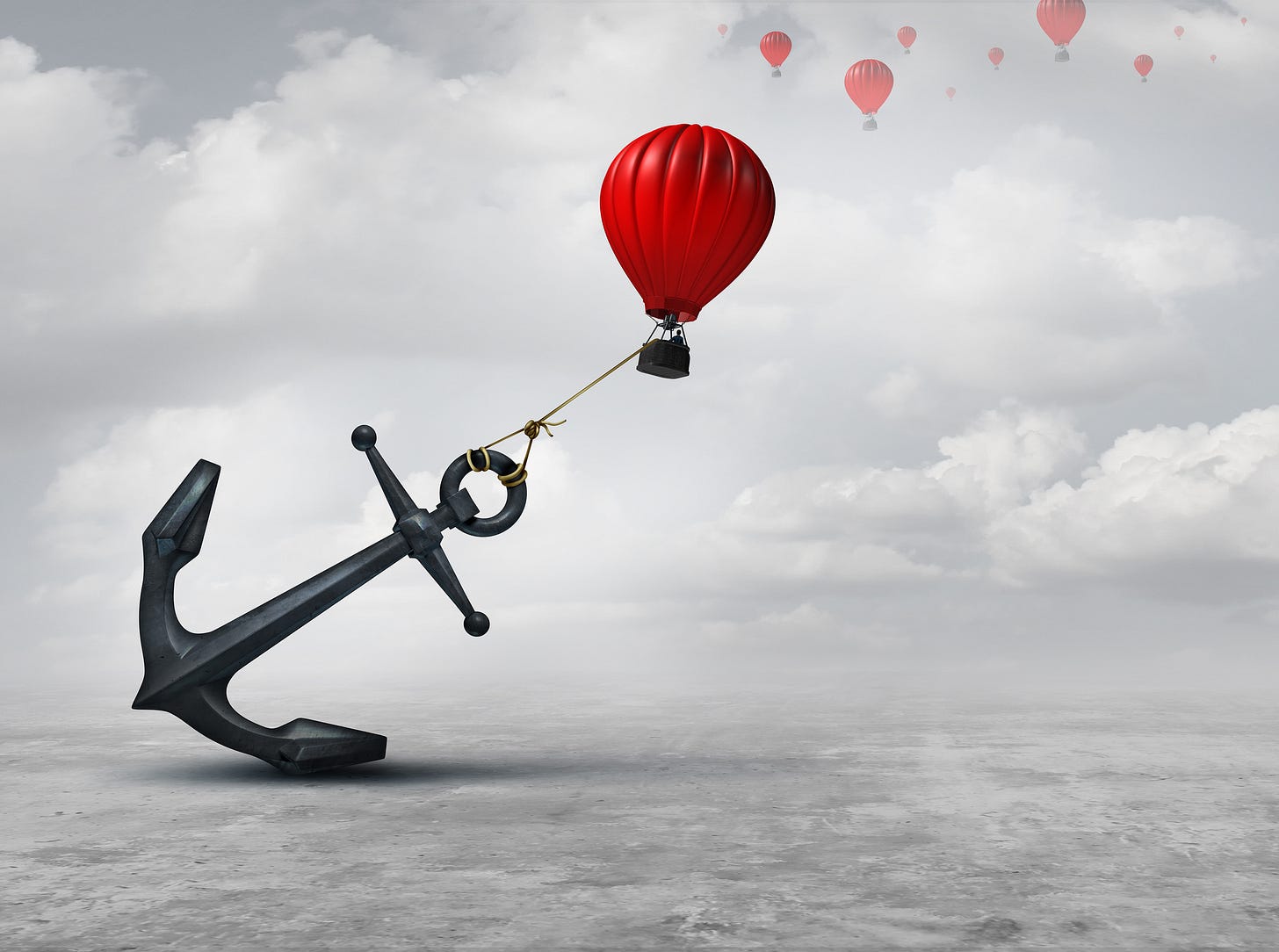Week 34: A Deeper Look at Anchoring
How First Exposures Support Our Inner Fears and Dimish Creative Problem-Solving
In the free post, we explored how anchoring can lead you to fixate on the first piece of information you receive—whether it’s being told you’re not good at something, being influenced by a price tag, or focusing too quickly on one explanation in a medical diagnosis.
But there’s a deeper question worth asking:
Why do we anchor at all?
It’s not just a glitch in how we process information.
It’s also a resistance to uncertainty, a fear of openness, and a defense against the vulnerability of not knowing.
The Hidden Roots of Anchoring: Fear of Openness, Curiosity, and Creativity
At its core, anchoring protects us from the discomfort of possibility.
The first answer—right or wrong—gives us a sense of stability. Exploring beyond it feels risky. What if we waste time? What if we fail? What if we uncover something painful? This is called the need for cognitive closure.
But anchoring isn’t just a cognitive bias—it’s a spiritual and emotional defense. The mind attempts to create control in a world that constantly demands surrender and exploration. In a sense, it is fed by guilt about potentially greater freedom.
Philosopher Søren Kierkegaard called anxiety “the dizziness of freedom.” Anchoring keeps us grounded—not because we’re safe, but because we’re scared to rise.
Everyday Examples: When Anchoring Blocks Growth
A young adult keeps taking the same kind of job over and over—because they’ve anchored on being “practical,” even though they long to do creative work.
A parent refuses to try therapy for their child—because they once read that “kids just need discipline,” and now everything is filtered through that lens.
A leader keeps listening to one consultant—because that person confirmed their fears, while others challenged them to grow.
Anchoring simplifies a complex world. But it also narrows it.
Celebrity Stories: Breaking the Anchor
Lady Gaga is a powerful example of someone who broke free from anchoring. Early in her career, she was told her image was “too strange” to succeed. That feedback became an anchor, triggering self-doubt and nudging her toward conformity. For a time, she tried to fit the mold, choosing what others called the “smart” or “safe” choices. But as she later revealed, she had to stop saying yes to things that didn’t feel right. Her real rise began when she rejected the comfort of external approval—and embraced the uncertainty of being fully herself. Letting go of that early anchor required resisting the need for cognitive closure and stepping into a creative identity that defied conventional expectations.
Keanu Reeves is often cast as stoic or emotionally flat. That early perception became an anchor. But watch his interviews, or hear his reflections on grief and philosophy, and a different picture emerges: someone deep, curious, and open to complexity. He quietly rejected the anchor of public opinion and embraced his own path.
Anchoring in Spiritual Life: Mistaking Familiarity for Truth
Keep reading with a 7-day free trial
Subscribe to Recipes for Success by Dr. Srini Pillay to keep reading this post and get 7 days of free access to the full post archives.





